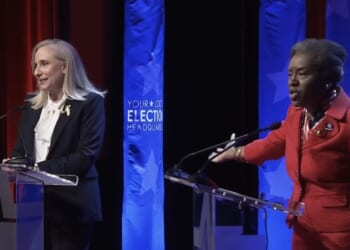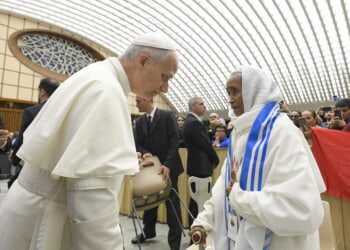Zohran Mamdani, self-proclaimed socialist and New York City mayoral frontrunner, is no fan of market prices.
Mamdani, for instance, agrees with that notorious New York City mayoral candidate of yesteryear that the “rent is too damn high.” He also thinks that wages are too low, grocery prices are too high, and childcare is too expensive. Listen to Mamdani for a few minutes, and you’ll develop a sneaking suspicion that he thinks most other prices aren’t right either.
Good intentions notwithstanding, the sad consequence of the minimum wage is to render the most vulnerable among us unemployable.
You wouldn’t either if, like Mamdani, you thought prices are as arbitrary as winning Powerball numbers or the WiFi password on the back of your router. For socialists like him, market prices are little more than annoying obstacles that stand between you and the food, clothing, and shelter you’re entitled to.
It naturally follows that the arbitrary sequence of digits we call “price” can be arbitrarily swatted away with little to no consequence. If prices are as meaningless as Mamdani insists, why not simply make them disappear, then conjure up whatever prices you deem “fair” to replace them? Voilà! Problem solved; scarcity eliminated.
Even better, this vanishing act can be massaged into a snappy campaign slogan. Enter “$30 by 2030,” a pithy Mamdani promise that captures his intention to gradually ease New York City’s minimum wage from its meager $16.50 an hour in 2025 to $30 an hour by 2030. And how convenient that the “right” price, the just price, for low-skilled labor — $30! — occurs in the year 2030, resulting in a slogan that fits perfectly on the width of a standard bumper sticker!
His supporters may call this happy coincidence “serendipity.” Economists might choose from a different family of names: palmistry, or perhaps, idiocracy.
The more inquisitive among us might even raise a few polite questions for the presumptive mayor. If $30 an hour is good public policy, might $31 be even better? One dollar might not sound like a lot, but let’s do some quick back-of-the-envelope math. At eight additional hours per day, while working (say) 50 weeks a year, this measly one dollar an hour balloons to $2,000 more per year! Plus, it will hardly break the banks of New York City’s fat cat employers.
True, raising the minimum wage to $31, instead of $30, would ruin the “$30 by 2030” bumper sticker. That’ll surely impose a real cost on the Mamdani campaign. Some poor campaign aide will have to go back to the marketing drawing board. But isn’t that a fairly small sacrifice to give lower-class New Yorkers a $2,000 annual raise? For someone as compassionate about the poor as Mamdani, it seems like a no-brainer.
But then it also seems like a no-brainer to ask, “Why stop at $31?” In fact, “$300 by 2030” would also fit on a bumper sticker, and now we’re finally talking real money. While we don’t claim any political expertise, we suspect “$300 by 2030” would poll better with focus groups. While we’re at it, though, why not just make it “$2,030 by 2030?” After all, we needn’t let something as arbitrary as a price be confined by something as arbitrary as real estate on a standard-length bumper sticker.
There is another flaw in Mamdani’s plan. His proposal only gradually increases the minimum wage over the next five years. Again, the more compassionate among us might wonder: Why must we wait until 2030 to bestow this long-overdue raise on the deserving poor? Is there anything metaphysically sacrosanct about 2030, other than that it nicely lends itself to a memorable catchphrase? Mamdani never shies away from calling New York City’s poverty rate and spiraling cost of living a “crisis.” Imagine the New York Fire Department learning of a burning building, and responding by alerting the occupants that it will be there … in 2030.
What, then, explains Mamdani’s reluctance to tack an additional zero or two onto his slogan? What explains his hesitation to implement this raise on his first day in office?
We don’t know for sure, but we suspect that deep down inside every economics-denier is someone who knows that reality always has the final say. Blood pressure monitors and thermometers display numbers that every sane person agrees are more than “sound and fury signifying nothing.” No sane person, if they’re sick, responds by smashing the thermometer because they don’t like the readout.
No sane person treats prices that way, either. Except here, the results of a “Hulk, smash!” approach are arguably worse. If you smash a thermometer, your fever will probably abate in a few days anyway. If you smash prices by forcibly overriding them with executive fiat, you wind up hurting the very people you’re trying to help.
Ask yourself: ‘Who would hire me if they had to pay $2,030 an hour?’ There are a few superstars worth millions a year, but most of us aren’t. Sadly, the same result applies to numbers less than “2,030,” including “30.” Good intentions notwithstanding, the sad consequence of the minimum wage is to render the most vulnerable amongst us unemployable.
Curiously, there is one price Mamdani often deems “right” — free! From health care to child care, groceries to busing, politicians like Mamdani love to promise voters the proverbial “free lunch.” But buyer beware — you just might get what you pay for.
READ MORE:
Some ‘No Kings’ Protesters Don’t Like Capitalism, but Are Republicans Practicing It?


![Scott Bessent Explains The Big Picture Everyone is Missing During the Shutdown [WATCH]](https://www.right2024.com/wp-content/uploads/2025/11/Scott-Bessent-Explains-The-Big-Picture-Everyone-is-Missing-During-350x250.jpg)














